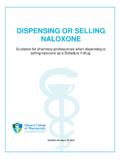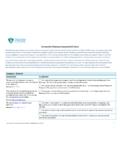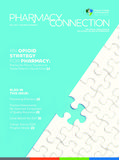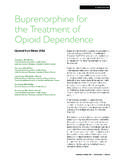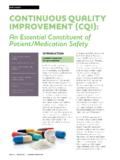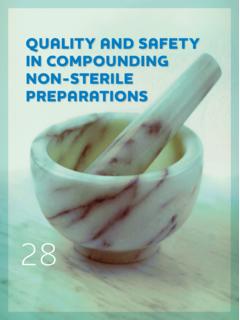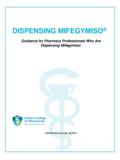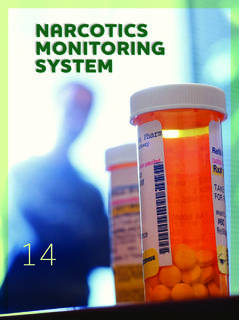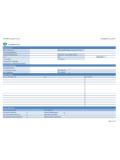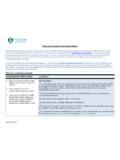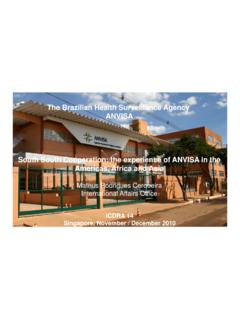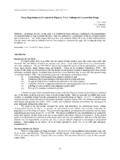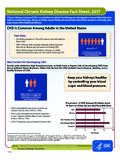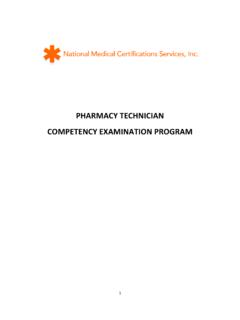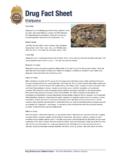Transcription of Model Standards for Pharmacy Compounding of …
1 Model Standards for Pharmacy Compounding of Hazardous Sterile Preparations DRAFT 4. National Association of Pharmacy Regulatory Authorities (adapted with permission from Pr paration de produits st riles dangereux en pharmacie Norme , Ordre des pharmaciens du Qu bec, 2014). Draft 4 Hazardous Sterile Preparations March 2015. 1. ACKNOWLEDGEMENTS. The National Association of Pharmacy Regulatory Authorities would like to first thank one of its members, the Ordre des pharmaciens du Qu bec, for having made possible the adaptation of its document entitled Pr paration de produits st riles dangereux en pharmacie Norme to create this national document, Model Standards for Pharmacy Compounding of Hazardous Sterile Preparations.. This adaptation would not have been possible without the work and dedication of the members of the National Association of Pharmacy Regulatory Authorities ad hoc Committee on Pharmacy Compounding members.
2 Special thanks are extended to these individuals: (list of members will be added). The Committee was supported by various contributors with different expertise in this area. Special thanks are also extended to these individuals as they largely contributed to the completion of the Model Standards . These individuals are: -Consultant for NAPRA. -Judy Chong from OCP. -Cameron Egli from CPBC. -Danielle Fagnan from OPQ. -Pharmacist from Saskatchewan - Pharmacy technician from BC. Eric S. Kastango, USP consultant for technical review CONTENTS. 1. INTRODUCTION. 2. OBJECTIVES. 3. REGULATORY FRAMEWORK. 4. ABBREVIATIONS. 5. CORE REQUIREMENTS FOR A STERILE Compounding SERVICE. Personnel Policies and procedures Facilities and equipment General maintenance log 6. PRODUCT AND PREPARATION REQUIREMENTS. Beyond-use date and dating methods Hazardous compounded sterile preparation protocols Hazardous compounded sterile preparation log Patient file Conduct of personnel in areas reserved for the Compounding of hazardous sterile preparations Aseptic Compounding of hazardous sterile preparations Packaging Draft 4 Hazardous Sterile Preparations March 2015.
3 2. Receipt and storage of hazardous products Transport and delivery of final hazardous compounded sterile preparations Recall of sterile products or final hazardous compounded sterile preparations Incident and accident management Hazardous waste management 7. QUALITY ASSURANCE PROGRAM. Program content Results and action levels Verification of equipment and facilities Quality assurance of personnel involved in aseptic Compounding Quality assurance of hazardous compounded sterile preparations Documentation of quality control activities 8. SOURCE FOR ADDITIONAL INFORMATION. 9. GLOSSARY. 10. LIST OF TABLES. 11. APPENDICES. Appendix 1 Policies and procedures for the Compounding of hazardous sterile preparations Appendix 2 Mandatory and supplemental references Appendix 3 Training of Compounding personnel and cleaning and disinfecting personnel Appendix 4 Procedure template Appendix 5 Minimum indicators for certification of controlled areas, laminar airflow workbenches and biological safety cabinets Appendix 6 Certification of controlled areas, laminar airflow workbenches and biological safety cabinets Appendix 7 Template for the drafting of Compounding protocols to be completed for each drug Appendix 8 Examples of sterile preparations that must be verified at each stage of Compounding Appendix 9 Procedure example.
4 Receiving, unpacking and storing hazardous products Appendix 10 Temperatures for different types of storage Appendix 11 Incident/accident reporting and follow-up form Appendix 12 Components of a quality assurance program 12. BIBLIOGRAPHY. Draft 4 Hazardous Sterile Preparations March 2015. 3. 1. INTRODUCTION. The Compounding of sterile preparations requires high quality Standards to ensure preparation quality and safety. Parenteral therapies are becoming more complex, and patients may now receive continuous antibiotic therapy or chemotherapy, among other therapies, for several days at home. Consequently, greater attention must be paid to the environment in which these preparations are prepared, the training of personnel and quality assurance procedures to prevent complications and protect the public more generally1. Evolving practice and increased awareness of the inherent dangers of Compounding sterile preparations for the health of both patients and Compounding personnel2 3 4 led to the need to review the Guidelines to Pharmacy Compounding published by the National Association of Pharmacy Regulatory Authorities (NAPRA) in October 2006.
5 The new NAPRA Model Standards for Pharmacy Compounding of Hazardous Sterile Preparations have been adapted from Standards originally developed by the Ordre des pharmaciens du Quebec, which are in turn based on General Chapter <797> of the United States Pharmacopeia National Formulary (USP NF) in effect in the United States since 2004. Their preparation was led by the NAPRA ad hoc Committee on Pharmacy Compounding and involved extensive consultations with experts and stakeholders. 2. OBJECTIVES. The aim of these Model Standards is to provide pharmacists and Pharmacy technicians who compound hazardous sterile preparations with the Standards necessary to evaluate their practice, develop service-related procedures and implement appropriate quality controls for both patients and Compounding personnel, with a view to guaranteeing the overall quality and safety of sterile preparations.
6 The Model Standards will come into effect in each province/territory once they have been adopted by the respective provincial/territorial Pharmacy regulatory authorities. These Model Standards represent the minimum requirements to be applied in Compounding sterile preparations; however, it is always possible to exceed these Standards . The use of other technologies, techniques, materials and procedures may be acceptable, so long as they are proven to be equivalent or superior to those described here. These Model Standards support the Model Standards of Practice for Canadian Pharmacists and Pharmacy technicians as well as other policies and guidelines that may be in place in provincial/territorial jurisdictions. 1. Dolan SA, Felizardo G, Barnes S, Cox TR, Patrick M, Ward KS, et al. APIC position paper: safe injection, infusion, and medication vial practices in health care.
7 Am J Infect Control. 2010:38(3):167-72. 2. Selenic D, Dodson DR, Jensen B, Arduino MJ, Panlilio A, Archibald LK. Enterobacter cloacae bloodstream infections in pediatric patients traced to a hospital Pharmacy . Am J Health Syst Pharm. 2003:60(14):1440-6. 3. Patel PR, Larson AK, Castel AD, Ganova-Raeva LM, Myers RA, Roup BJ, et al. Hepatitis C virus infections from a contaminated radiopharmaceutical used in myocardial perfusion studies. JAMA. 2006;296(16):2005-11. 4. Kastango ES. The cost of quality in Pharmacy . Int J Pham Compound. 2002;6(6):404-7. Draft 4 Hazardous Sterile Preparations March 2015. 4. 3. REGULATORY FRAMEWORK. Many health care professionals prepare compounded sterile preparations, including nurses, physicians, pharmacists and Pharmacy technicians. However, the majority of sterile Compounding is performed by Pharmacy personnel under the supervision of pharmacists.
8 Although these Standards could serve as best practices for other health care practitioners, they pertain specifically to pharmacists, Pharmacy technicians and pharmacies where compounded sterile preparations are prepared. The preparation of medication ( Pharmacy Compounding ) has always been an integral part of the practice of Pharmacy . It is essential to the delivery of health care and allows for personalized therapeutic solutions to improve patient care. However, Pharmacy Compounding must always be carried out within a prescriber . patient pharmacist relationship. Provincial/territorial Pharmacy regulatory authorities are responsible for regulating a Pharmacy 's Compounding services in these situations. In situations involving requests to compound preparations outside of a prescriber . patient pharmacist relationship, in the absence of a patient-specific prescription, the preparation activities fall under the federal legislative framework.
9 For example, the bulk preparation of compounded preparations in the absence of a prescriber- pharmacist-patient relationship would fall under the federal legislative framework. Health Canada is the federal department responsible for the Food and Drugs Act and the Controlled Drugs and Substances Act and their associated regulations. In January 2009, Health Canada developed its Policy on Manufacturing and Compounding Drug Products in Canada 5. At the time these Model Standards were prepared, Health Canada was examining this policy with a view to creating new Standards for situations not covered within the practice of Pharmacy or under the current federal licensing framework such as commercial Compounding manufacturing. The NAPRA professional competencies for Canadian pharmacists and Pharmacy technicians at entry to practice provide guidance for developing an ethical, legal and professional practice.
10 One of these competencies specifies that a pharmacist or Pharmacy technician must seek guidance when uncertain about his or her own knowledge, skills, abilities and scope of practice. Therefore, individuals who do not have the knowledge, training, expertise, facilities or equipment required to compound sterile preparations must refer patients to a colleague who does have the competencies and facilities required to do so or, where permitted by provincial/territorial legislation, ask another Pharmacy to compound the preparation for them. Compounded sterile preparations include the following types of medications: nasal inhalation solutions respiratory therapy solutions 5. Health Canada, Health Products and Food Branch Inspectorate. Policy on manufacturing and Compounding drug products in Canada. POL-051. Ottawa, ON: Health Canada; 2009. Available from: mps/compli-conform/gmp-bpf/ Draft 4 Hazardous Sterile Preparations March 2015.
